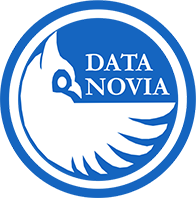The History and Evolution of Programming Languages
Introduction
Programming languages have evolved dramatically since the inception of computers. From the primitive binary instructions of early machines to today’s sophisticated high-level languages, the development of programming languages reflects the continual push toward making technology more accessible and efficient. This article explores the key milestones in the history of programming languages, highlighting how these changes have influenced modern computing.
Early Beginnings: Machine Code and Assembly Language
In the earliest days of computing, programmers communicated directly with the hardware using machine code—a series of binary digits that the computer could execute directly. This process was both laborious and error-prone. To simplify this task, assembly language was developed, allowing programmers to use symbolic representations of binary instructions. An assembler then converted these symbols into machine code, making programming slightly more accessible.
The Emergence of High-Level Languages
The introduction of high-level programming languages marked a significant turning point. Languages such as Fortran (Formula Translation) and COBOL (Common Business-Oriented Language) emerged in the 1950s and 1960s, providing abstractions that allowed programmers to write code closer to human language. These languages reduced the complexity of programming and made it possible to develop more complex applications.
Structured Programming and the Rise of Procedural Languages
During the 1970s, structured programming became a popular paradigm. Languages like C emerged, emphasizing the use of control structures and modular design to improve code clarity and maintainability. This era laid the groundwork for more organized and reliable software development practices.
Object-Oriented Programming and Beyond
The 1980s and 1990s saw the rise of object-oriented programming (OOP), which introduced concepts such as classes, objects, inheritance, and polymorphism. Languages like C++ and later Java revolutionized software design by modeling real-world entities, promoting reusability and scalability. OOP continues to be a dominant paradigm in many modern programming languages.
Modern Trends and Future Outlook
Today, the landscape of programming languages is more diverse than ever. Languages like Python and R have become popular for their simplicity and powerful libraries, particularly in fields like data science and machine learning. Additionally, functional programming languages (such as Haskell and Scala) and scripting languages (like JavaScript) are shaping the future of software development. With the rise of new paradigms like reactive and concurrent programming, the evolution of programming languages shows no sign of slowing down.
Conclusion
The evolution of programming languages is a testament to the ingenuity of the computing community. Each milestone—from machine code to high-level languages and object-oriented paradigms—has contributed to making programming more accessible, efficient, and powerful. As technology continues to evolve, so too will the languages we use to harness its potential.
References / Further Reading
- A Brief History of Programming Languages
- The Evolution of Programming Languages
- From Machine Code to High-Level Languages
Happy exploring, and may this journey through the history of programming inspire your own coding adventures!
Explore More Articles
Here are more articles from the same category to help you dive deeper into the topic.
Reuse
Citation
@online{kassambara2024,
author = {Kassambara, Alboukadel},
title = {The {History} and {Evolution} of {Programming} {Languages}},
date = {2024-02-01},
url = {https://www.datanovia.com/learn/programming/introduction/history-of-programming-languages.html},
langid = {en}
}
